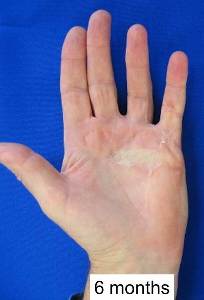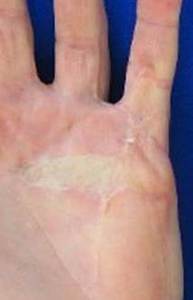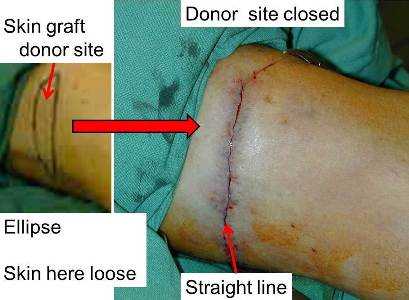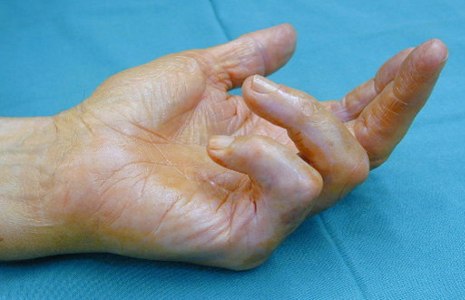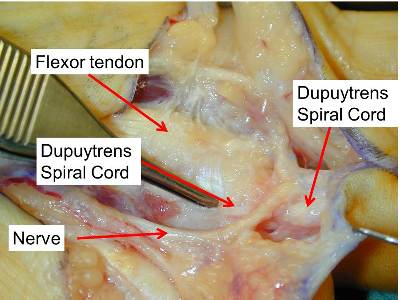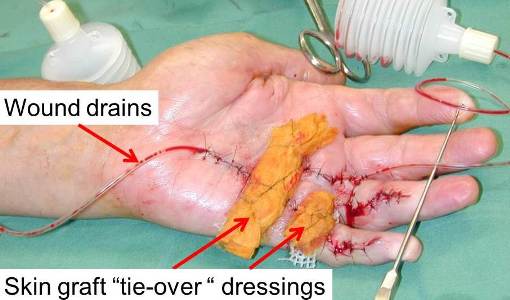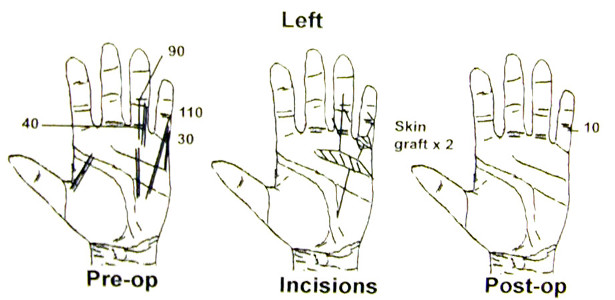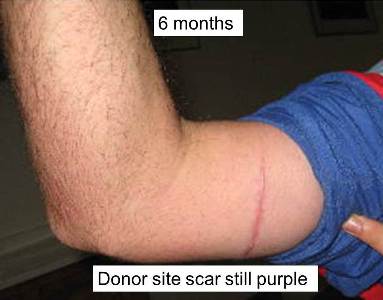Skin Grafting for Dupuytrens
When Dupuytrens cords have been present for some time the skin on the volar ( Palm) side of the finger contracts.
- When the deformity is corrected there is not enough skin to allow the finger to straighten. The solution is either:
- Local skin flaps Z plasties or V-Y plasties.
- Skin grafts
- Leaving the wound open to allow it to heal from underneath
There is plenty of loose / available skin on the inner aspect of the arm. This can be used as a skin graft.
The skin can then be applied to the palm or finger to:
1. Provide skin cover to the hand
2. The skin graft PREVENTS Dupuytrens cords from reforming.
The donor skin is elliptical in shape but the donor site can be closed and a straight line scar results.
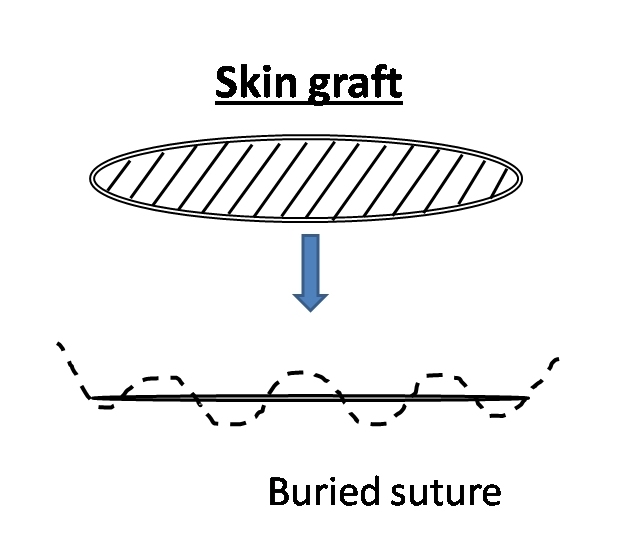
In the palm a straight line incision becomes and elliptical defect after the finger deformity is corrected.
This is a case of recurrent Dupuytrens disease.
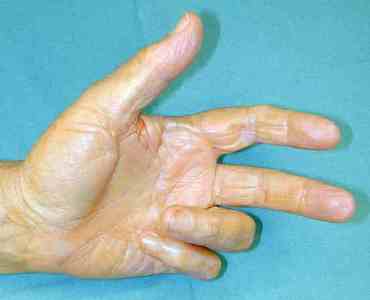
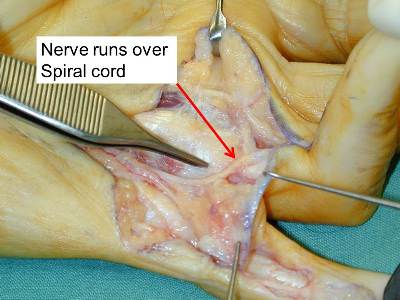
Excess tissue from the deep surface of the skin graft is removed before the graft is applied to the hand.
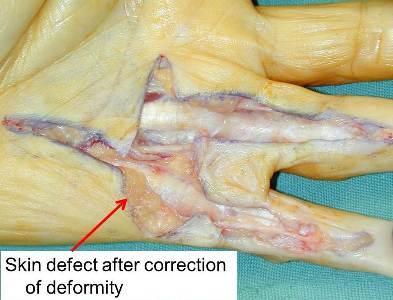
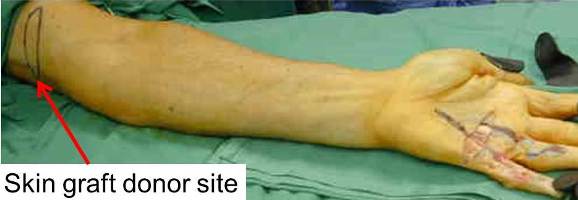
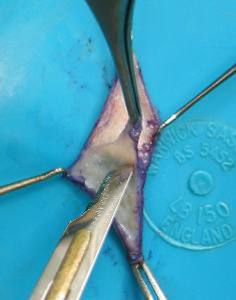
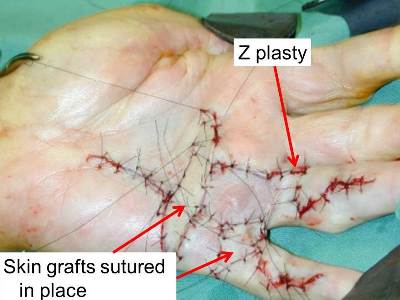
After the skin is sutured in the palm “Tie –Over” dressings are sutured over the top. They force the skin onto the underlying tissue. The graft has no blood supply when it is transferred so there is a race going on between the skin graft dying and the blood vessels growing up into the overlying skin. Thankfully the race is usually won and the graft survives.
If a blood clot or infection develops under the graft then this process is delayed and the graft may die. It is therefore absolutely critical for the hand to be kept ELEVATED to prevent bleeding. Drains are also inserted at the end of the procedure to remove any ongoing bleeding. The drains are usually removed within 24 hours.
The procedure is documented on a diagram so that the Hand therapist is informed of the degree of correction obtained at Surgery. Here there was a residual 10 * deformity at the little finger PIP joint that was accepted.
By 6 months after the surgery the scars have lightened and softened. Early on it is very common for the scars to go through a purple ( reactive) phase.
